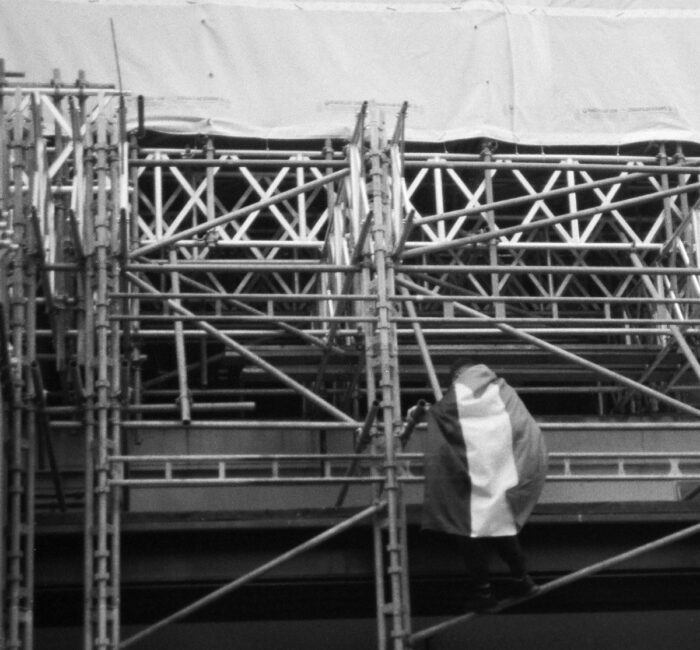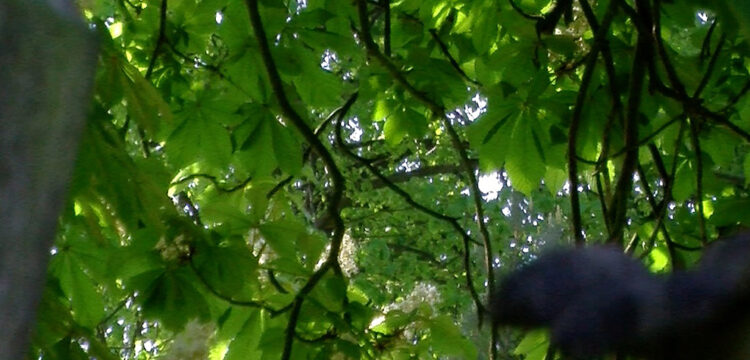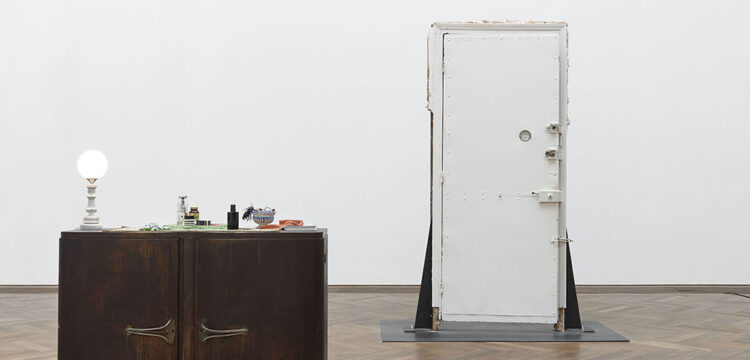Timeline Palestine
Times between and beyond the timeline
“We are trying to use the map we found in the future to have access to specific places in the past.”
Map 2.0, Adele Jarrar. Reworlding Palestine: Short Science Fiction Stories from Palestine (2019).
Language becomes the advanced troops of physical violence, and the cleaner of debris in its wake. A tool that erases, for a second time, or resurrects and re-narrates the dead, embalmed then enshrouded in its words. We know that language cannot be miserably neutral, it has a long documented history of being wielded with deadly intent, or linguistic sleight of hand. Sleight of mind, sleight of might. So when war is declared, implying war has begun, we would be remiss not to recognise that such declarations suggest that war was not already underway, had not already been underway for the last three-quarters of a century. What is actually being declared is yet another war-within-war, a continuation posing as a beginning.
Similarly the pronouncement of ceasefire is no ceasefire, the war and killing continues without bullets or bombing, only different intensities. Susceptibility to such rhetorical declarations is in part positional and relational, but also willful in its ignorance; those under siege, the second or third of their generation born in camps, those locked in to their oral history would recognise certain periods of intensification (declared to be war) as part of an ongoing, unceasing process with different rhythms, as opposed to moments of starts and breaks (the declaration of war and its ceasefire).
Positionality may be the least of the factors affecting susceptibility, writing from London and Bergen, without the lived experiences or proximities to Gaza, I am primarily reliant on the reposting of first and secondhand accounts mediated through social media. The image and videos that circulate around and through you depends on the platforms you are immersed in and the algorithms immersed in you, this equally applies to what we don’t see.
My feed splinters between Palestinian image-producers, the-witnesses-within, whose voices are amplified by social media allies, and then there is content produced, clipped and shared (or appropriated from) ‘Big Media’ (e.g. state communications, military footage, The BBC, Guardian, and other USA & Australian publishers and broadcasters).
Regardless of where the algorithms take me, as responsive as they are to my own feedback loops, my stream still flows within a much larger, domineering, tidal force of anti-Palestine media. It is through Big Media, the daily printing of broadsheets and the typical early morning/evening news TV broadcasts that we have the notion of the news cycle. Its heart still beats despite the advent of live streaming and internet posting (asynchronous with the classical print or broadcast rhythms). It also shapes how we process what we call news. In particular I am thinking of the way we are fed and narrated clusters of images event-by-event. For this to be digested we have to buy into a certain notion of an event as something prescribed within boundaries of time and place, rather than the visible swelling of subterranean motions that began rolling decades before, the event as connective to long histories.
“Evental” representation flattens dynamics into action-and-reaction, attack-and-retaliation, it lends itself and is vulnerable to ahistorical readings of events themselves, making us more likely to misinterpret what is circulated and more susceptible to fake news (in part because of a lack of engagement with the histories of newsmaking itself). A complex web of time-specific-non-linear-movements, (which are in dialogue with generational pasts and histories) are flattened into an even swinging pendulum. Not only is complexity suffocated, but the primacy of one event is always presented at the cost of another’s non-representation (spatially and in time, just as the pendulum cannot be a two points at once); this can be within a given conflict, but also across conflicts in different geographic territories.
This is intensified by our social media feeds, the unceasing timeline, the endless scroll buffered by waves of algorithms and surges of one set of images over others. As our social media timelines become our filter, mediator and transmitter their design becomes paramount. If only our timelines could be replaced by timedials, in a metaphorical coding sense, could social media platforms generate more recursive, less-linear experiences? If this is asking (or expecting too) much from the US centric corporate owned platforms, then could a tonic, the tonic to go with the Djinn of the social media feed, be the parallel readings of Palestinian historians, writer and poets who invite us to longer term conjectures and durations?
I am re-reading, Reworlding Ramallhah: Short Science Fiction Stories from Palestine published in 2019, edited by Callum Copley. Two stories in particular, Empty Boxes by Shaymar Nader and Map 2.0 by Adele Jarrar exemplify this invitation, tellingly they share a play with temporality, magik/technology and textiles.
In Empty Boxes, Fatiha, a jaded, burnt out, tentative, fortune teller in Jericho negotiates a sweet deal with a smuggler. . . “When she opened it, the box was empty. One palm went up, tugging the sides of her hair, whilst the other went into the box. She felt something and grabbed it. Of course she didn’t know what she was holding until she realized that her hands had disappeared. An invisibility cloak.” The cloak is not for Fatiha but one of her clients, Salma. It allows her to come and go across a checkpoint. Two kinds of seeing: precognition and the retinal are intertwined in the text. Fatiha, seems burdened by the weight of never ending speculation, a cognitive load she does not choose to bear, but honors. In Map 2.0 a disillusioned coder and programmer in Ramallah, referred to as M., discovers a portal in the car park of a derelict shopping mall. It first takes the protagonist to the no longer existing Shilta Village on the 13th April 1941, “Shilta was depopulated by Zionist militias, its people killed or expelled in 1948.” On a second visit M. is in Palestine in the year 2100, he encounters a resistance cell that includes historians, ecologists and theologians who enjoin him to continue his mapping of the past. Inspired and reinvigorated M. sews chips into embroidered maps of Palestine, “spreading stories of the past as far as he could so that one day, the future might be different.”

The “evental” or event-orientated gaze is akin to eyes, or detectors that cannot (or refuse to) witness movement once it falls below a certain threshold of speed. When it is not contained and packaged as an event, one that can be clipped, and recirculated—it is deemed unreadable (a lacuna between events). These lacunae, uncontained and less legible, must not be forgotten or disregarded, or subject to editing (in the social media sense and in terms of collective memory).
The refusal to forget goes hand-in-hand with the refusal of evental reading, they are necessary counter-maneuvers to multi-generational strategies (as employed by ecocidal corporations and genocidal states) who calculatedly employ incremental violence, slow violence (the uprooting of Olive trees, the occupation of land, weaponising of administration, destabilizing and dismantling of infrastructure—water and electricity) in a fashion that avoids becoming eventful “enough”. This is interspersed with event-based violence (the bombing, the shootings) that can be performatively stopped all the better for the former to continue.
This careful calibration of the threshold of violence that does-or-does-not become event facilitates slow genocide. Just as fossil fuel companies invest in forecasting strategies for the next hundred years, so the slow genocide is administered like a baton from generation to generation. It never becomes the concentrated ‘event’ that necessitates a full blown external response or intervention.
If the uncontainable, gradual, mass ethnic-cleansing and slow genocide is recognized and named as such by US and UK residents, can that undermine the ongoing financial and military aid and legal protection afforded the current Israeli administration by Western allies through their foreign policies? Especially when it is so opposite to the USA and UK governments’ self-proclaimed commitment to human rights and international law?





